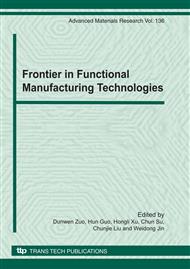p.256
p.260
p.264
p.269
p.275
p.279
p.284
p.289
p.293
Study on Atmospheric Corrosion Behaviour of Sicp/Al Composite
Abstract:
SiCp/Al composite was fabricated by the method of pressureless-infiltration. In atmospheric environment, the atmospheric corrosion behavior of SiCp/Al composites (ZL101+49%SiC+5%Mg) was studied by mass loss, optical microscope (OM), scanning electron microscope (SEM), X-ray diffraction (XRD), energy dispersive spectrometer (EDS) and Fourier transform infrared spectroscopy (FTIR), respectivelhy.The results show that the corrosion rate of the SiCp/Al composites increases with increasing of time in atmospheric environment. Pitting corrosion is the main characteristic of SiCp/Al composite, and corrosion area gradually extends around with time increasing. At last, sheet like corrosion substrates distribute in the surface of n the SiCp/Al composites. Amorphous Al2O3 and amorphous AlxSO4yOHz are the main corrosion products.
Info:
Periodical:
Pages:
275-278
Citation:
Online since:
October 2010
Keywords:
Price:
Сopyright:
© 2010 Trans Tech Publications Ltd. All Rights Reserved
Share:
Citation:


